About a week ago we got one of our first really cold nights. Technically we didn’t get below freezing, but I’ve come to learn over the years that our farm is in a little micro climate that is a few degrees cooler than homes that are only six hundred or so feet west of us or a couple miles north and south. That means when the night time temperatures are predicted to be in the low 40’s we can easily flirt with freezing temperatures. We didn’t have a hard freeze that night, other wise the whole garden would be black and dead, but we did get low enough to zap some of the pumpkin vines, the cucumbers and the green beans. I am sad about the cucumbers, we could have had a few more weeks with them, but I didn’t pay close enough attention and get them covered. The green beans were on their way out already, the generally cooler temperatures had slowed production to almost nothing. With that being the case it was time to put that bed to sleep for the winter. I don’t like my beds to sit empty for long, I like quick turn around to give all the time I can to preparing for the next crop. (Sorry the pictures aren’t that great, the lighting was terrible and we were working quickly to get done before dark)
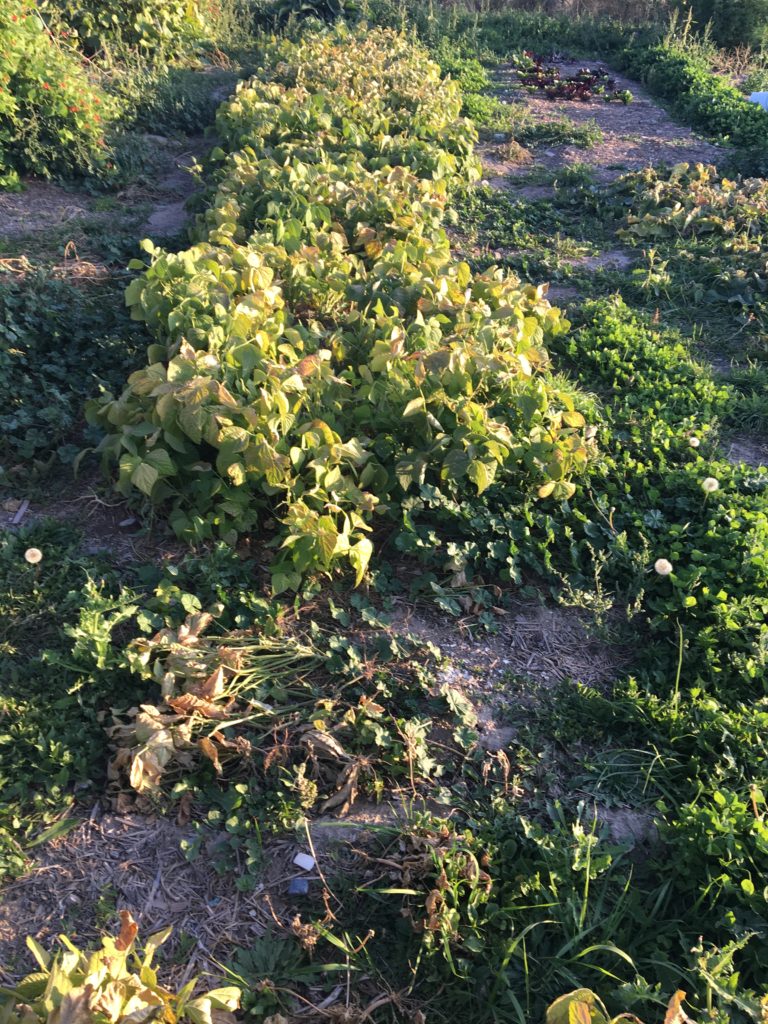
You can see the tops of the bushes are yellow and dead, those leaves got cold enough it killed them, the plant underneath are still alive, but all the blossoms dropped, indicating we are done with green beans for the season.
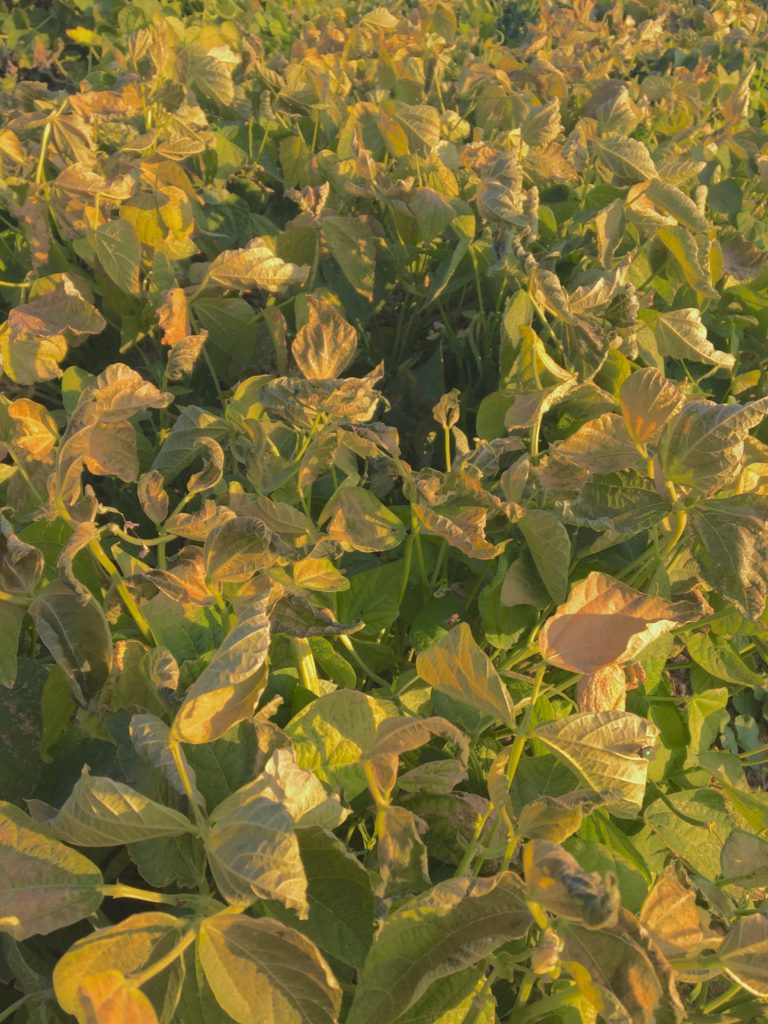
A close up of the frost zapped plants.
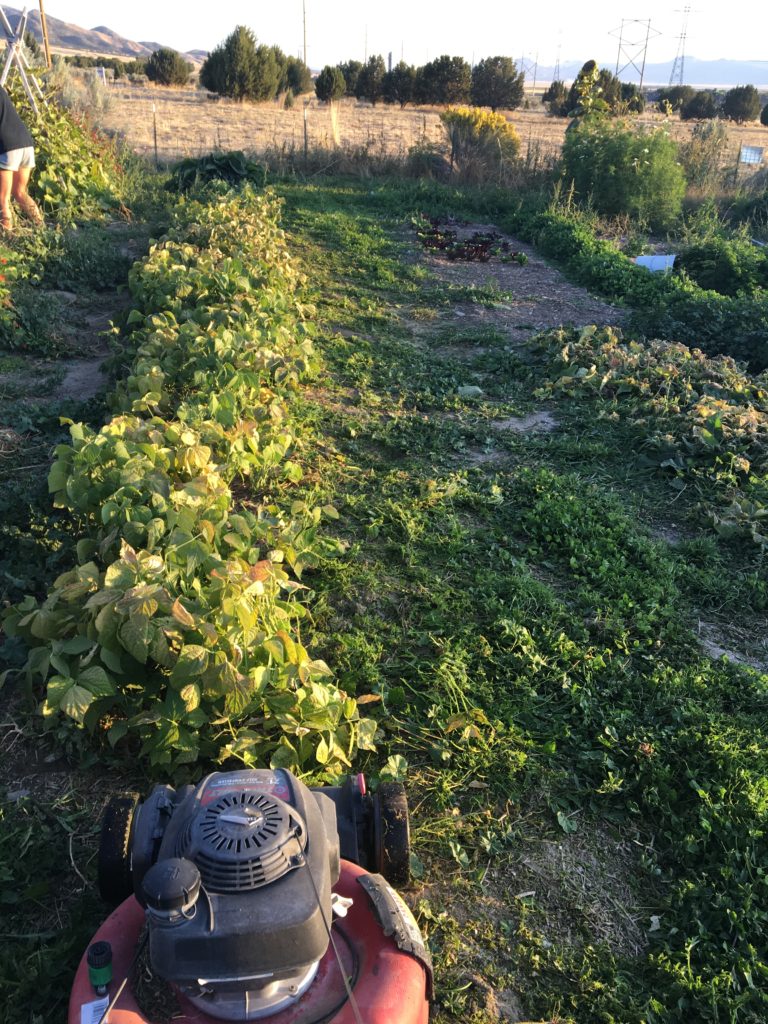
The first step to preparing the bed for the winter is to mow down the plants. Unless I find evidence of disease or insect infestation I never pull plants up, they are mowed down and left to compost in place. The roots will compost under the ground, nourishing it and feeding beneficial soil bacteria.
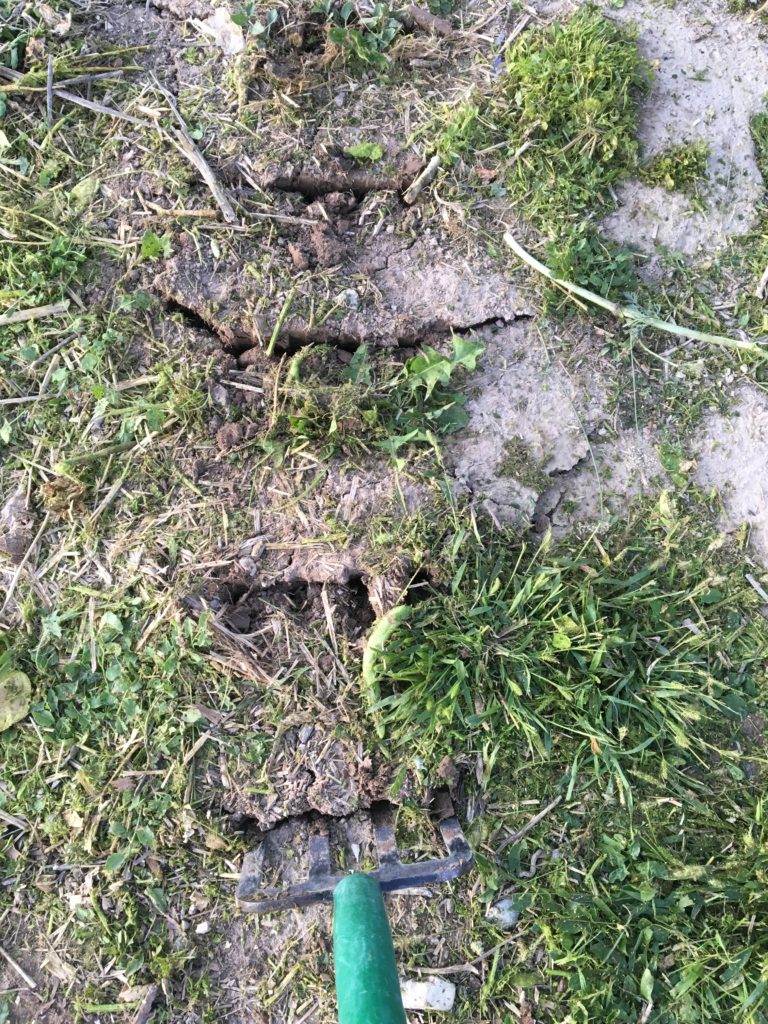
On the farm we use a “low” till method. We don’t regularly till the soil and if we do its very light and shallow. Tilling disrupts the soils ecosystem, which is fragile and necessary, especially with organic gardening. Instead of tiling I will lightly aerate with a broad fork, pushing it in the soil and lifting slightly, I don’t dig anything up or turn it over. This allows oxygen, water and compost to filter a little more easily down into the soil and helps combat compaction. Ideally a healthy soil ecosystem accounts for those things, but we are still working on that!
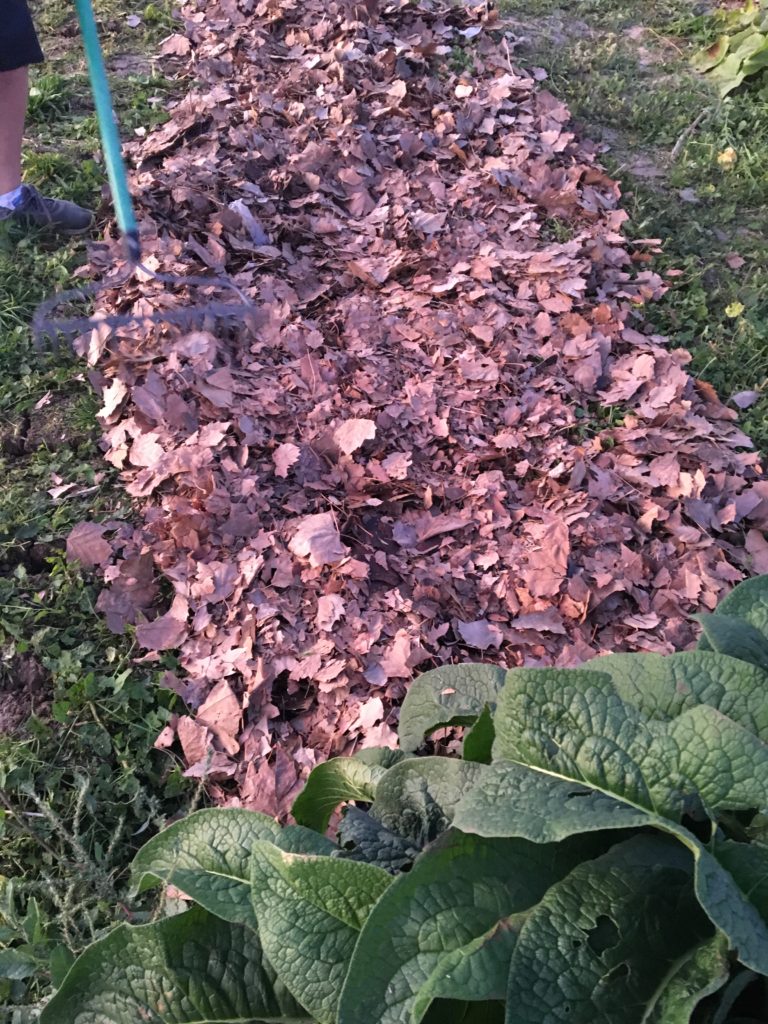
After working the bed with a broad fork we add a nice layer of organic matter. I happened to use old leaves from last year. I have used old hay and straw, it doesn’t matter so much what it is, what matters is that organic matter is getting put down. Very soon the earthworms, rolly-pollies and other insects and microorganisms will get to work on those leaves, breaking them down and leaving a nice humus layer. This will help the soil retain water, stay fluffy for oxygenation and feed next years crop.
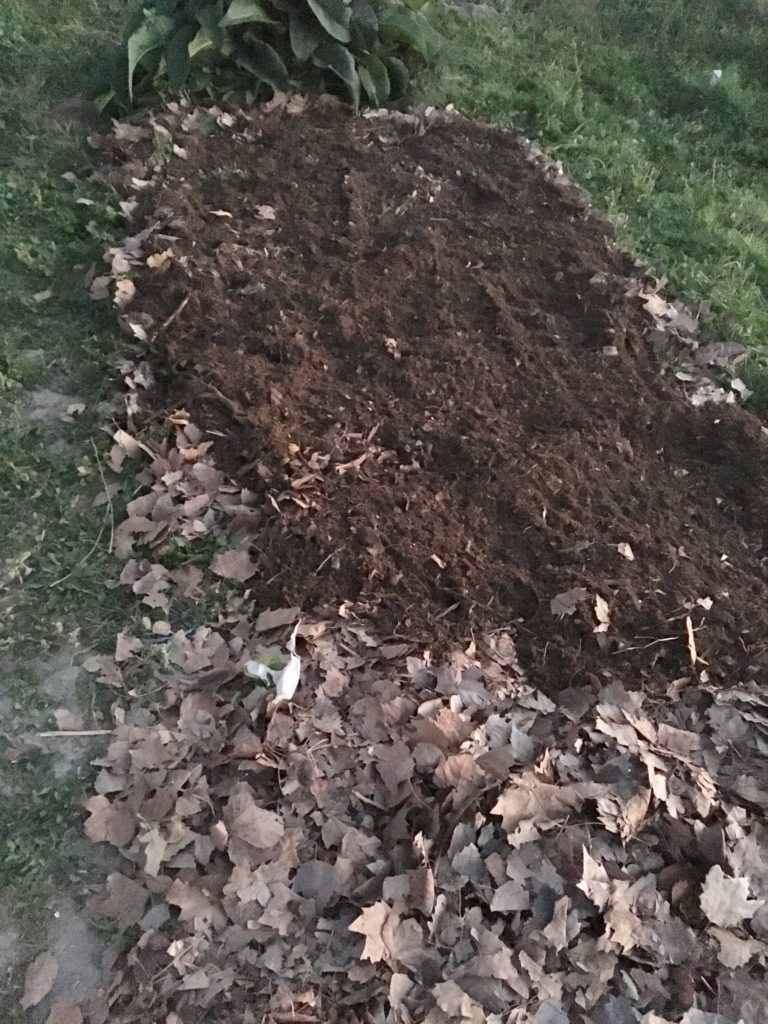
Over all the leaves we spread between 2-3 inches of compost. This black gold is home grown Quail Run compost made from old hay and bedding from the goats and rabbits, horse manure, leaves, grass clippings, comfrey, kitchen scraps and chickens. These were all piled in the chicken yard and the chicken spend about three weeks working it over, turning it and adding their contribution. This is the best compost, so rich and healthy. I’m always amazed that a few weeks ago this looked like a pile of dirty hay and now it looks and smells like rich soil. The compost will add to the richness of the soil and also aid in breaking down the leaf layer.
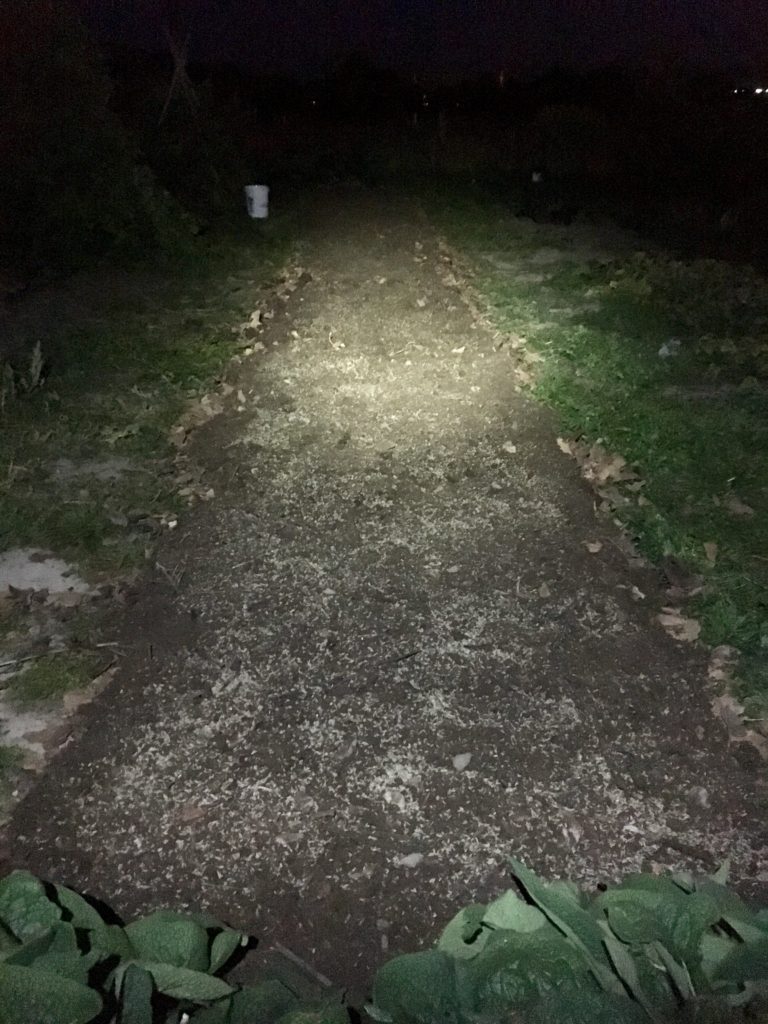
Finally after mowing, going over with the broad fork, adding organic matter and compost I was ready to seed for the cover crop. Leaving a bed bare could potentially make all my hard work go to waste. Wind, freezing tempratures, heavy rain can all wash away and break down the soil layers. A cover crop keeps that all in place. A cover crop will also add to the organic matter in the bed come spring time when it is mowed and lightly tilled in, cover crops will also add certain nutrients to the soil. I am planting rye grass and winter rye, both will germinate and grow until everything freezes soil for several days, it will then stay dormant until the early spring and then pick right back up, it will be ready for mowing just before planting time. I finished raking the compost and sowing the cover crop by head lamp.
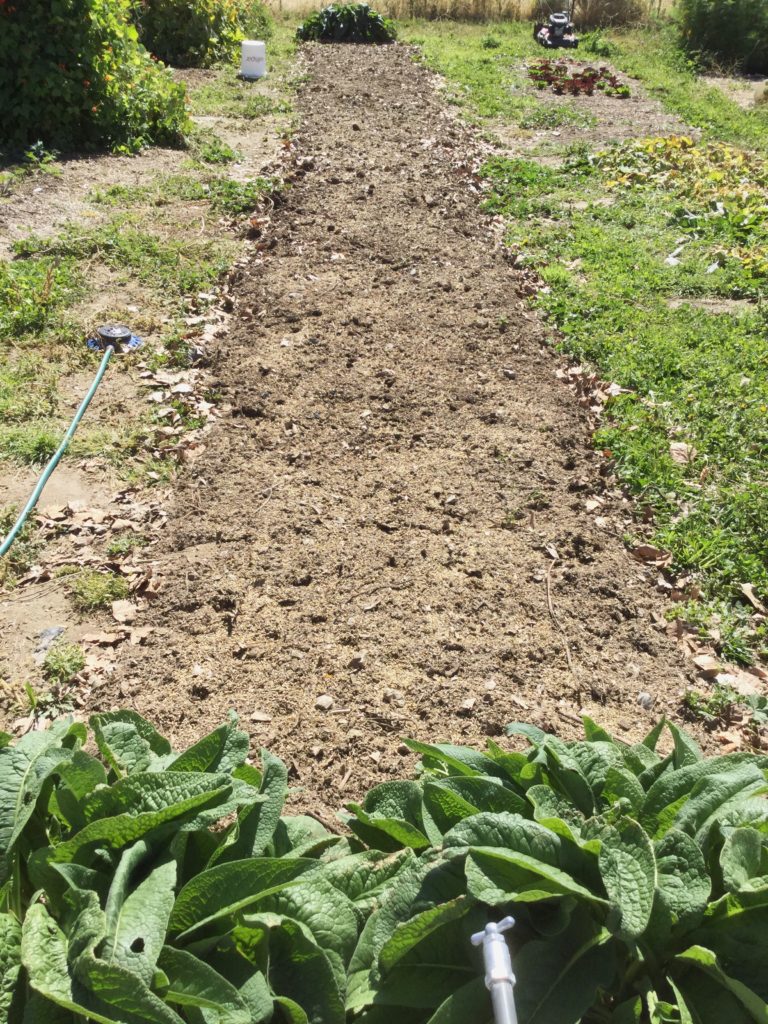
Here is the bed a day or two later. Now the fun part: watching for little rye sprouts!

I’m curious that when you plant in the spring, don’t you have a lot of rye growing where you want your new seeds or seedlings coming up?
The rye gets mowed and then lightly tilled under before it goes to seed. We use an annual rye grass, so it wont come back as long as it doesn’t go to seed.